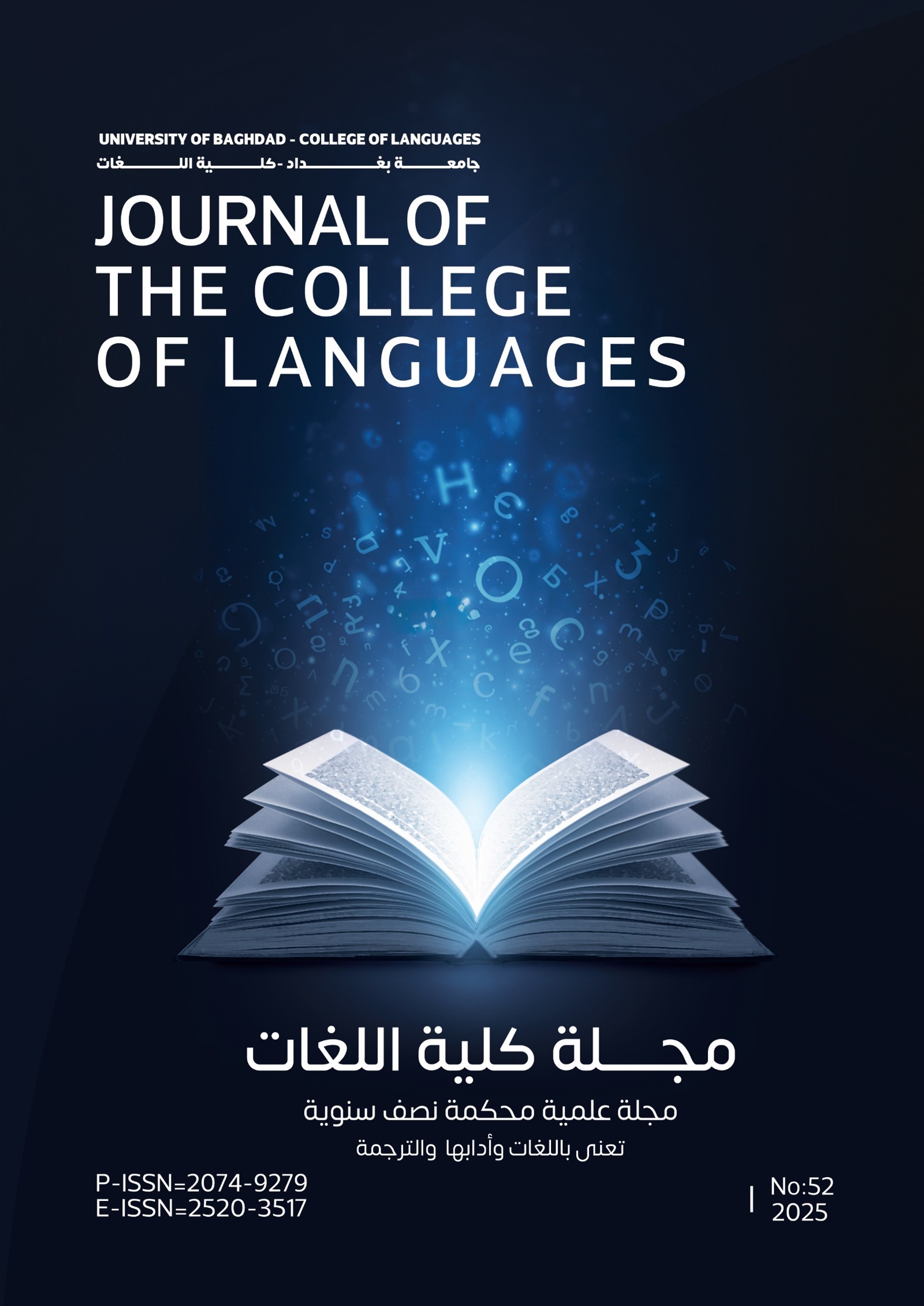A Feminist Stylistic Analysis of Anti-feminist Poetry in English and Arabic
DOI:
https://doi.org/10.36586/jcl.2.2022.0.46.0090Keywords:
Feminism, Masculinism, Anti-feminist Poetry, Stylistics, Sexism, Gender.Abstract
Language plays a major role in all aspects of life. Communication is regarded as the most important of these aspects, as language is used on a daily basis by humanity either in written or spoken forms. Language is also regarded as the main factor of exchanging peoples’ cultures and traditions and in handing down these attributes from generation to generation. Thus, language is a fundamental element in identifying peoples’ ideologies and traditions in the past and the present. Despite these facts, the feminist linguists have objections to some of the language structures, demonstrating that language is gender biased to men. That is, language promotes patriarchal values. This pushed towards developing extensive studies to substantiate sexism in language. The main question is: is language really sexist? This study employs a feminist stylistic analysis to investigate these theories, and takes the anti-feminist poetry as a springboard for that, for it addresses multiple issues objected to by feminism. The model adopted in this study is Sara Mills’s (1995) Feminist Stylistics which analyzes different structures of language that oppose feminism; English and Arab modern anti-feminist poetry is the genre that is investigated in this study. Besides, this study aims at revealing the societies’ inherent views about women along with investigating the feminist essential claim; that language is sexist. This is done by conducting both qualitative and quantitative analyses on the data. The current study has concluded that language in its pure form is not sexist; rather sexism is a personal and well as a societal attitude. Furthermore, there are certain items, especially in English, that can be regarded since English does not have a feminine form on its own; still, such items can always be avoided and other neutral items can be used instead. Finally, this study recommends that a feminist practical approach is required to track and omit gender bias in language from school books as it has a major effect on the ideology of society. It also recommends to developing a feminist method to raise the awareness against the indirect forms of sexism that plague literature.
References
Bunnin, Nicholas; Yu, Jiyuan (2004). The Blackwell Dictionary of Western Philosophy. Malden, Mass: Blackwell Publishing.
Carter, R., & Simpson, P. (Eds.). (1989). Language, Discourse and Literature: An Introductory Reader in Discourse Stylistics. London and New York: Routledge.
Delmar, Rosalind (1986) .What Is Feminism: A Re-Examination. Ed. Juliet Mitchell and Ann Oakley . New York: Pantheon.
Ging, Debbi; Siapera, Eugenia (2019). Gender Hate Online: Understanding the New Anti-Feminism. Palgrave Macmillan.
Goddard, Angela; Patterson, Lindsey (2000). Language and Gender. London; New York: Routledge.
Goodman, Lizabeth (1996). Literature and Gender, eds. Routledge; The Open University.
Fairclough, N. (1995). Critical discourse analysis: The critical study of language. In A Feminist Discourse Analysis of Writer's Gender Biases about Violence Against Women. Journal of the College of Languages, 44: 23. University of Baghdad.
Herman, Vimala (1995). Dramatic Discourse: Dialogue and Interaction in Plays. London; New York: Routledge.
Kreidler, C. (1998). Introducing English Semantics. London: Routledge.
Kvam, Kristen E.; Schearing, Linda S.; Ziegler, Valarie H. (1999). Eve and Adam: Jewish, Christian, and Muslim Readings on Genesis and Gender. Indiana University Press.
Mills, Sara (1995). Feminist Stylistics. 1st Ed. London: Routledge.
Mills, Sara (2008). Language and Sexism. Cambridge University Press.
Saeed, John I. (2016). Semantics. 4th Ed. Blackwell Publishing Ltd.
Schaefer, Richard T. (2009). Sociology: A Brief Introduction (8th ed.). New York: McGraw-Hill.
Wareing, S. (1994). ‘And then he kissed her: the reclamation of female characters to submissive roles in contemporary fiction’. In Wales, K. ed. Feminist Linguistics in Literary Criticism. Woodbridge: Boydell and Brewer.
Wodak, Ruth (1997). Gender and Discourse. SAGE Publications ltd.
Wulandari, Uci (2018). AFeminist Stylistic Analysis in Laurie Halse Anderson’s Novel: Speak. University of Sumatera Utara.
Downloads
Published
Issue
Section
License
Copyright (c) 2022 Journal of the College of Languages (JCL)

This work is licensed under a Creative Commons Attribution 4.0 International License.








